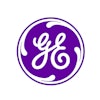WASHINGTON, DC - A lack of specific training led to misdiagnoses by radiology residents reading appendiceal CT scans, while over-the-counter antacids caused misreadings even among experienced radiologists, according to presentations May 10 at the American Roentgen Ray Society meeting.
Dr. Richard Kim from the University of Chicago told attendees about his teaching hospital's experience with residents reading CT scans for suspected appendicitis.
Since July 1998, CT has been the modality for appendicitis screening at the university hospital. Radiology residents who are on call at night generally give preliminary readings, Kim explained. While previous literature has shown that experienced radiologists have good results with CT, evaluations of residents' performance are uncommon, he said.
In this study, 20 CT scans performed for suspected appendicitis were reviewed retrospectively by 20 residents who had no prior experience with the approach. The exams were chosen to reflect the spectrum of abnormalities commonly associated with appendicitis, and included pathologically proven cases of the disease, along with images of patients with diverticulitis, mesenteric adenitis, tubo-ovarian abscesses, and panniculitis. Several images of healthy appendices also were included in the sample.
"The residents were asked to answer the questions: 'What is the diagnosis, was the appendix identified, and was appendicitis identified?'" Kim said. "The results were far from spectacular."
First- and second-year residents logged an overall sensitivity rate of 47% and specificity of 81% for identifying appendicitis. Third- and fourth-year residents came in with 47% sensitivity and 76% specificity.
In the ten cases of known appendicitis, the residents correctly identified the problem anywhere from 15% to 75% of the time, Kim said. The residents were considered to be on target if there were three or more findings suggestive of appendicitis, such as inflammation or free fluid and air. Ancillary findings such as appendicolith also improved the detection rate.
Sixty-five percent of the residents diagnosed right-sided diverticulitis as appendicitis, making it the most misdiagnosed abdominal pathology, Kim said.
Once this study was concluded, the residents were given one-on-one reviews with an attending physician to discuss the cases. They also attended lectures on acute appendicitis. After the training period, on-call residents were reviewed again. Their scores improved dramatically to an 83% sensitivity rate and 100% specificity, Kim said.
Extensive training is absolutely necessary before residents are asked to read CT scans for suspected appendicitis, Kim concluded. Courses should cover proper identification of the appendix, evaluation of the appendix in its entirety, and the pathology of peri-appendiceal diseases.
Unfortunately, experienced radiologists don't always fare better than well-trained residents, according to another ARRS presentation. Radiologists at a community hospital in Utah didn't quite match the success rate of other institutions with nonenhanced CT appendix imaging, the researchers reported.
"We average 200 appendicitis cases a day and we thought if we could use unenhanced CT, that would save us a lot of time with diagnosis," said presenter Dan Heaston. Heaston, who will begin attending medical school in fall of this year, co-authored the study with his father, Dr. Dennis Heaston and Dr. Jeffrey McClellan from the Utah Valley Regional Medical Center in Provo.
Images of 115 patients who underwent thin-section helical CT without enteric or intravenous contrast were retrospectively evaluated six months after the scanner was installed. Based on this review, the criteria for diagnosing appendicitis included an appendix diameter greater than 8 mm, and appendicolithiasis or inflammatory changes.
Subsequently, 518 consecutive patients with suspected appendicitis were prospectively evaluated with CT over one year. Diagnosis was confirmed with clinical follow-up and pathology identified in surgery.
Of those 518 cases, 175 were interpreted as positive for appendicitis, with 26 false positives. CT scans in 318 cases were deemed negative, of which 28 were false negatives. Twenty-five cases were undetermined. Overall, the center's CT scanning for appendicitis had a sensitivity of 84%, specificity of 92%, and an accuracy rate of 89%.
The most common source of errors was the inability to differentiate between appendicoliths and previously ingested, over-the-counter antacid medications, Heaston said. The high density of these tablets produced artifacts on the images that mimicked appendicoliths. Peri-appendiceal inflammation was another misleading factor.
"Just because the inflammation was present didn't mean that it was coming from the appendix," Heaston explained. "In this case, it was an infected diverticulum."
Previously published studies, in particular one out of Brooke Army Medical Center in Fort Sam Houston, TX, had accuracy rates of as high as 97% (Radiology, Nov.1999, Vol. 213:2, pp. 341-346). The Utah center's 89% accuracy was "lower than we wanted. At that point, we decided to change our protocol," Heaston said.
Since the abstract was submitted to the ARRS, the group scanned an additional 302 patients with CT and a contrast agent, administered rectally or intravenously, and garnered a slight improvement to 90% accuracy. The next step in their research will be to determine if oral contrast agents can help boost the detection rate, Heaston said.
By Shalmali Pal
AuntMinnie.com staff writer
May 11, 2000
Let AuntMinnie.com know what you think about this story.
Pass on the Rolaids: CT scans for appendicitis stump radiologists
Latest in CT
a2z Radiology AI nabs U.S. FDA clearance for CT device
November 26, 2025
Use precontrast, low attenuation CT to better identify liver cancer
November 25, 2025
GEHC submits 510(k) to FDA for new PCCT system
November 24, 2025
















